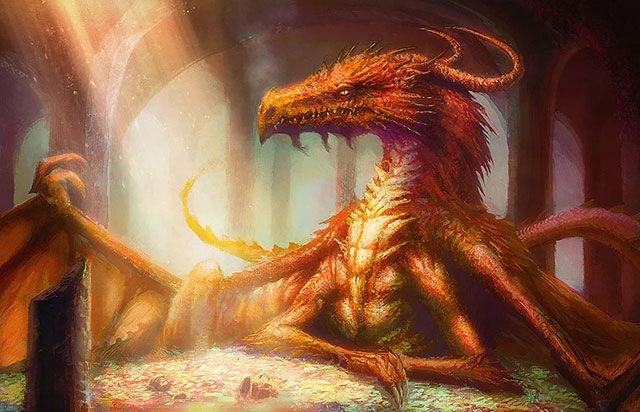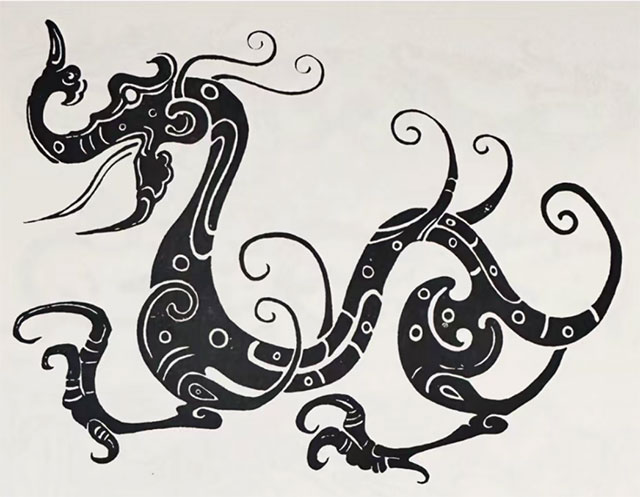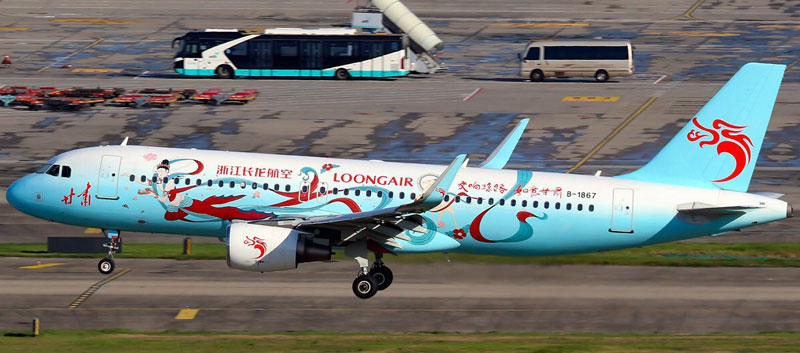
返回首页 为什么是“龙的传人”? 投稿信箱:1131376436@qq.com 《译龙风云》 |
|
中国侨网号召:龙年认准中国 Loong,请别再用 Dragon 今天傍晚,微博号“中国侨网”发出号召:“龙年认准中国 Loong,请别再用 Dragon”,全文如下: # 四海同春 #【龙年到!# 龙年认准中国 Loong # 请别再用 Dragon】即将到来的中国新年是龙年,如何用英语向外国朋友介绍中国的“龙”呢?中国龙和西方龙(Dragon)并不相同。在西方文化中,龙通常被描绘成一种邪恶的、喷火的物种,它们囤积财宝,还会给邻近的地区带来恐慌。在中国文化中,龙被尊崇为力量、超然和繁盛的象征,充满了智慧和仁爱。中西方对这些神话生物的认知差异,根植于它们不同的文化价值观。龙年认准中国 Loong!请别再用 Dragon |

文末的超链接指向下面这篇微信公众号上的文章: 龙年认准中国 Loong!请别再用 Dragon 原创:赵心心,侨号 CHINESEHORN,2024年1月30日发表于福建 即将到来的中国新年是龙年,但如何用英语向外国朋友介绍中国的“龙”呢?它不仅是学术问题,更是文化传播的问题。 The upcoming Chinese New Year is 龙年(lóngnián), but how should we introduce the Chinese "龙" to our foreign friends? It's not just an academic question, but also one of cultural dissemination. 中国龙和西方龙(Dragon)并不相同。 The Chinese "龙" is not the same as the Western Dragon. 在西方文化中,龙通常被描绘成一种邪恶的、喷火的物种,它们囤积财宝,还会给邻近的地区带来恐慌。在西方神话和文学中,龙通常制造混乱和邪恶,在传说故事中,它是英雄的敌人,也是英雄的“证明”。这种叙事,可以追溯到古代美索不达米亚和近东神话。 Western portrayals of dragons often characterize them as evil, fire-breathing entities that amass wealth and instill fear in villages. In Western myths and literature, dragons are typically depicted as chaotic and malevolent beings, serving as adversaries in stories where they are ultimately defeated by heroic figures. This portrayal is rooted in ancient Mesopotamian and Near Eastern myths. 在当代西方文化中,恶龙继续在奇幻小说、电影、视频游戏和电视剧中扮演重要的角色。它们通常既威严又可怕,常常是“善-恶”之争的核心。 In contemporary Western culture, dragons continue to captivate audiences in fantasy novels, movies, video games, and TV series. They are frequently shown as a blend of both majestic and intimidating qualities, often central to the narrative conflict between good and evil. |

史矛革是西方流行文化中恶龙的代表
但是,在中国文化中,龙被尊崇为力量、超然和繁盛的象征,充满了智慧和仁爱。几千年来,中国龙在文化中占据着重要地位,它根植于中国早期文明、神话、民间传说。由于人们相信龙掌管着自然,并与“水”的滋养和“土”的肥沃联系在一起。它体现了宇宙的平衡、和谐的秩序。 However, in Chinese culture, "龙" is venerated as an emblem of strength, excellence, and prosperity, known for their wisdom and benevolence. The significance of "龙" in Chinese culture spans thousands of years, with roots in early Chinese civilization, mythology, folklore, and religious traditions. Believed to govern natural phenomena, and linked to the nourishing aspects of water and land fertility, "龙" symbolizes strength, good fortune, and embodies balance, harmony, and the natural order of the universe. |

秦汉时代的龙纹(Loong Patterns from the Qin-Han period)
在中国社会中,龙作为吉祥、活力和自然力量的象征,依然受到崇敬和喜爱,这反映了历史传统在现代中国的延续性。 Representing auspiciousness, vitality and the power of nature, "龙" remain a revered and beloved symbol in Chinese society, reflecting the enduring significance of historical traditions in modern China. 古代的中国是世界上最为强大的国家,许多外国人到访中国。这些旅行者们为了将中国的事物、观念介绍给本国人,常常使用相似但不准确的翻译。他们的作品是当时了解中国的窗口,同时也造成了许多影响深远的误解。比如,学者发现,第一个将中国的龙翻译为“dragon”的人,很可能就是马可.波罗。 In ancient times, China was the one of most powerful nation in the world, attracting numerous foreign visitors. These travelers, eager to share Chinese objects and ideas with their homelands, often resorted to similar yet inaccurate translations. Their accounts served as windows into China at the time, but also led to many long-lasting misunderstandings. For instance, it suggested that Marco Polo was likely the first to translate 龙 as "dragon" in the Western world. 中西方对这些神话生物的认知差异,根植于它们不同的文化价值观。对此敏感的人群往往做出了最快的反应。早在清朝末年,在美国的华人就将中国龙翻译为“loong”,以便和西方的 dragon 区分开来,表达了华裔的尊严,告诉外国人,中国人并非邪恶的种族。而今,越来越多的中国企业选用 Loong 来作为公司或产品的英译名,比如“长龙航空”的英文名是“Loong Air”。 The differences in perception of the mythical creatures in China and the West are rooted in their different cultural values. Those sensitive to this disparity often respond the quickest. As far back as the late Qing Dynasty, Chinese people in the United States translated "龙" as "loong" to distinguish it from the Western "dragon", a move that expressed the dignity of the Chinese heritage and conveyed to foreigners that the Chinese are not an evil race. Today, an increasing number of Chinese enterprises are adopting "Loong" as the English translation for their companies or products. For instance, "长龙航空" is known in English as "LOONGAIR." |

我们呼吁用“loong”这个词来代表中国龙,因为它不仅具有相似的发音,而且这个词的形态也容易让人联想到与中国龙的形象。 We advocate for the use of the term "loong" to represent "龙", as it not only has a similar pronunciation, but its form also readily evokes the image of "龙". 我们希望这个中国新年的到来,能让更多外国朋友使用“Loong”而不是“Dragon”来称呼中国龙,能够欣赏“中国龙”的形象,并理解其中蕴含的深厚的中华文化价值。我们期待,当中华文化越来越“强势”,不必多加一个“o”,直接用“LONG”来代表中国龙,也会成为现实。 We hope that with the arrival of the Chinese New Year, more foreigners will adopt the term "loong" instead of "dragon", learn to appreciate the image of the Chinese Loong, and understand the deep cultural values it represents. We look forward to a time when, also, as Chinese culture becomes increasingly influential, "龙" could be represented simply as "LONG" without the need for an extra "o". (黄佶编辑增图,2024年1月30日) 相关链接: 四十三年的持续努力,中国学者论译龙: 跨世纪的先见之明:中国学者论译龙(1980年 - 1999年) 绝无仅有的异口同声:中国学者论译龙(2000年 - 2005年) 译龙风云拉开帷幕:中国学者论译龙(2006年 - 2014年) 大多数人选择 Loong:中国学者论译龙(2015年 - 2023年) -------------------------- (返回顶部) |
返回首页 《译龙风云——文化负载词的翻译:争议及研究》全文免费下载 |